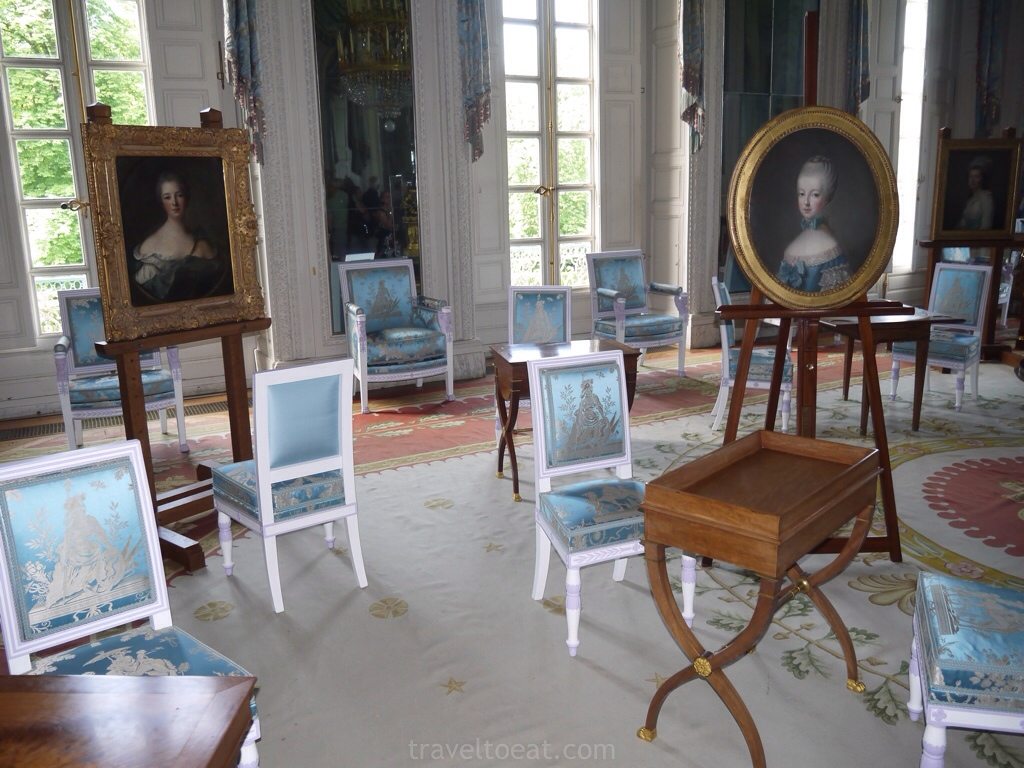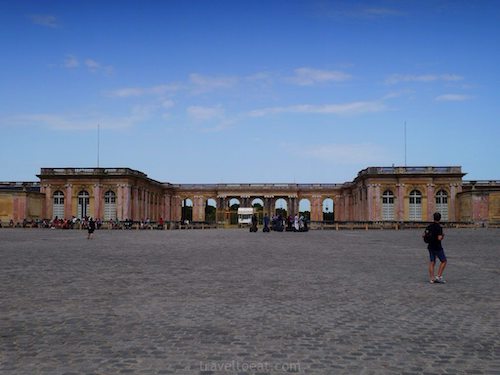
In 1668, Louis XIV purchased Trianon, a hamlet on the outskirts of Versailles, and commissioned the architect Louis Le Vau to design a porcelain pavilion (Trianon de porcelaine) to be built there, to escape the pomp and rigid formality of court life with his mistress Madame de Montespan. In only a few years the fragile porcelain tiles deteriorated and Louis XIV had it torn down to be replaced with a more robust building.
In 1687 Jules Hardouin Mansart built the Grand Trianon, considered the most refined group of buildings anywhere in the domain of Versailles, on the site of the “Porcelain Trianon”. It is located at the end of the right end of the cross of the Grand Canal seen in the map to the right by the red box. In 1717, Peter the Great of Russia, who was studying the palace and gardens of Versailles, resided at the Grand Trianon; the Grand Palace at Peterhof is copied on Versailles.
We happened to visit during a special exhibition, Les Dames de Trianon (Ladies of the Trianon) which features all the kings’ women, the wives, the daughters, the sisters, the mothers, the ladies-in-waiting, the mistresses. Versailles is trying to revive interest in the often-overlooked Grand Trianon by hosting exhibitions here, like last year’s successful “A Taste of the 18th Century,” which brought together modern designers’ creations inspired by the 18th-century. I will be presenting images of the paintings from the exhibition in addition to images of the Grand Trianon.
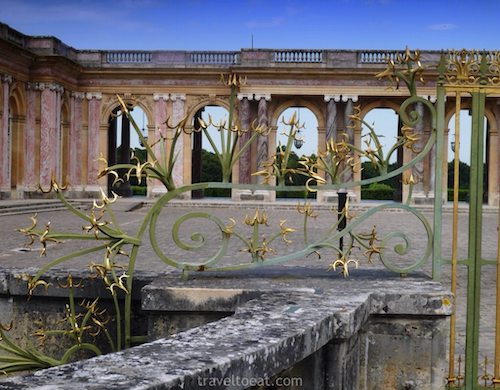
This is a detail of the front fence of the Grand Trianon and while not as grandiose as the Palace, it seems more in harmony with the surroundings. Italian architecture heavily influenced the architecture of the building, which stands between a courtyard and garden. A balustrade once filled with vases, statues of groups of children and sculpted figures conceals the flat roof.
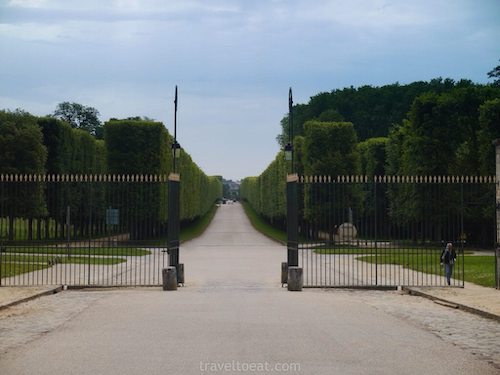
Here is a view just inside the outer gates of the Grand Trianon.
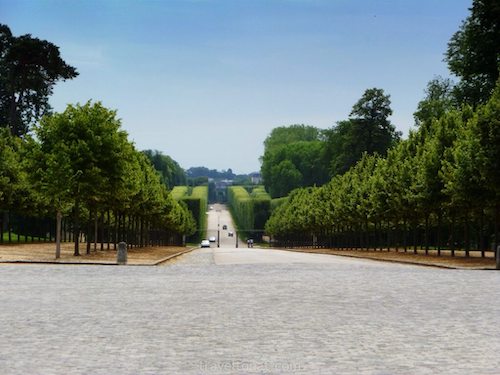
This is the view from the large courtyard in front of the Grand Trianon. You can see that the Grand Trianon is also built on a small hill. The two rows of trees are trimmed square, like a hedge. I wonder how they do the tops?
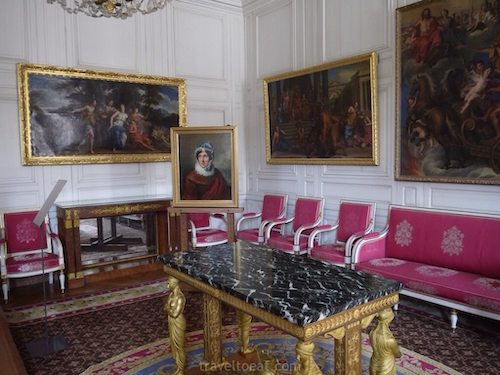
This is the Salon des Aides de Camp, it was used for aides-de-camp during the reign of Louis-Phillipe and was a group of secondary rooms during the time of Napoleon. The mahogany console with bronze doré against the wall is by Thomire Duterme from 1812. The set of eight chairs and a sofa are from the furnishing of Napolean, First Consul, the Château de Saint-Cloud in 1802. The double faced bronze elm console in the middle by Jacob Desmalter, from the palais de l’Elysée 1810. This piece was once a mosaic tray which disappeared and was replaced by green marble-de-mer. The pictures on the wall are a group of five with the theme of the life of Hercules by Noël Coypel (1628-1707) commissioned in 1688.
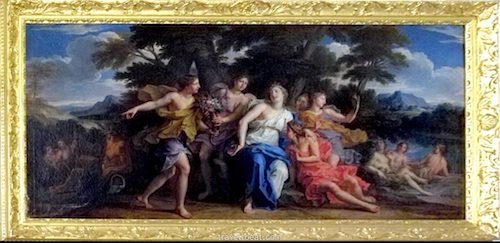
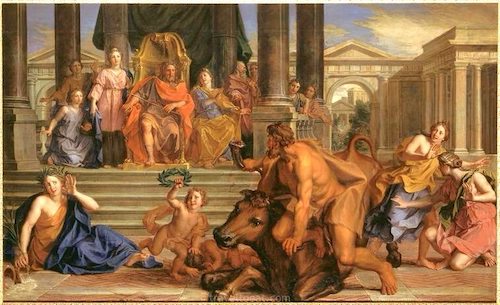
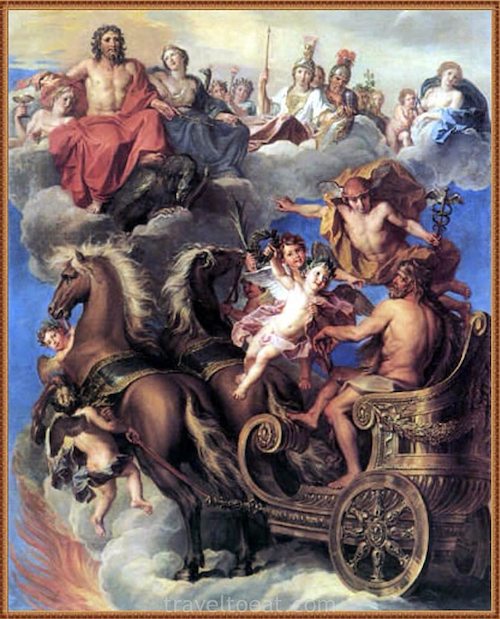
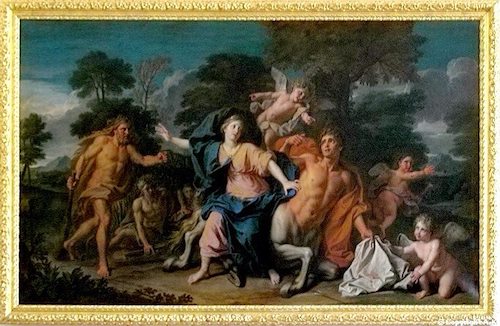
Noël Coypel was appointed Director of the Académie Royale on 13 August 1695, after Mignard’s death. Housed at the Galeries du Louvre as of January 1673, Noël Coypel thus devoted, as did many now unfamiliar painters, most of his production to the décor of the royal residences (Tuilieries, Versailles and Trianon). He collaborated extensively in the first campaign of paintings commissioned for the Trianon (1688-1693) although he belonged to an “intermediate” generation, placed between the great elders such as Mignard, Le Sueur, Le Brun and the “Trianon Generation” represented by La Fosse, Jouvenet, Houasse and the Boullognes.
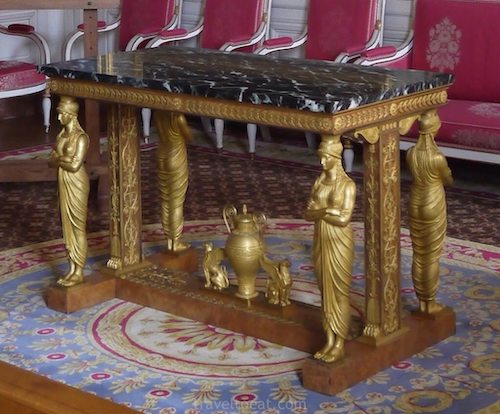
The double faced bronze elm console in the middle is by Jacob Desmalter, from the palais de l’Elysée 1810. The top was once a mosaic tray which disappeared and was replaced by green marble-de-mer top.
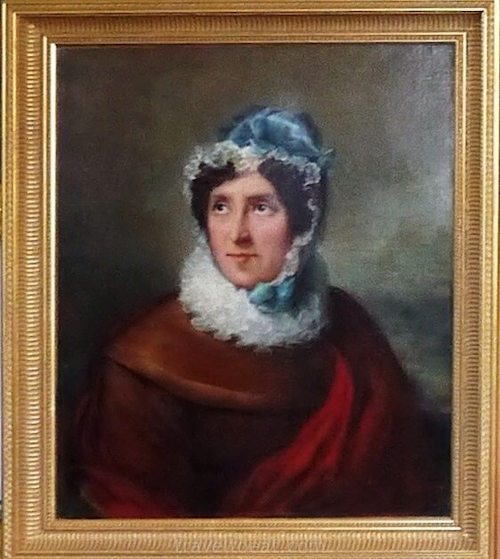
This is a portrait of Madame Campan, Directress of the Imperial House of Écouen, which Napoléon founded for the education of girls. The artist is Louis-Rose-Julie de Montferrier who was the wife of the elder brother of Victor Hugo.
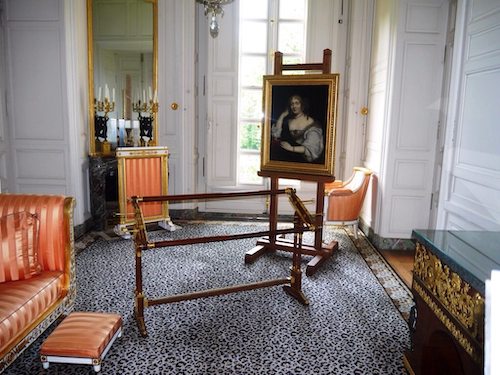
This is the boudoir of Madame Mère (Maria Letizia Bonaparte), Napoleon’s mother, in 1805, then of Marie-Louis in 1810. The couch, chair, footstool and firescreen are by Darrac from 1810, all from the boudoir of Marie-Louis. The mahogany bureau de arc-de-triomphe is by Jacob-Freres 1796. The mahogany tapestry loom decorated in bronze is by Alexandre Maigret 1810. The two bronze candelabras are by Claude Galle from 1809. The leopard print on the rug is a typical print for the anciene regime.
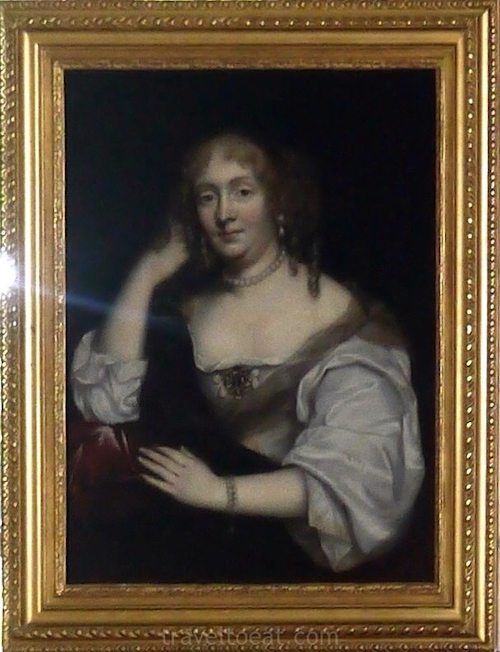
This is a portrait of the Marquise de Sévigné, a well known letter-writer with many anecdotes of the court of Versailles.
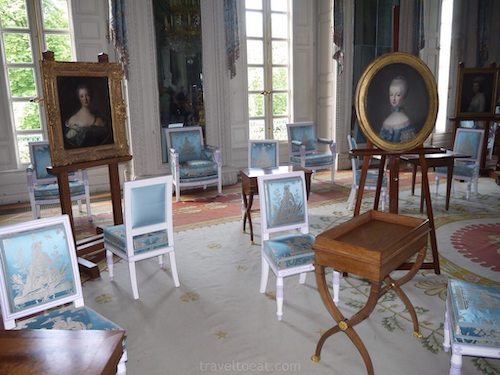
This beautiful corner room is called the Mirrors Room. A Council Room in the reign of Louis XIV, it has kept its cornice and decorative wood panelling with mirrors dating from 1687-1689, modified in 1706. In 1805, it became the large study of Madame Mère, and then that of the Empress Marie-Louise. It was once again used as a Council Room in the reign of Louis-Philippe. All the small mahogany tables were delivered in 1810 for this room (according to models found in other imperial homes) by Jacob-Desmalter.
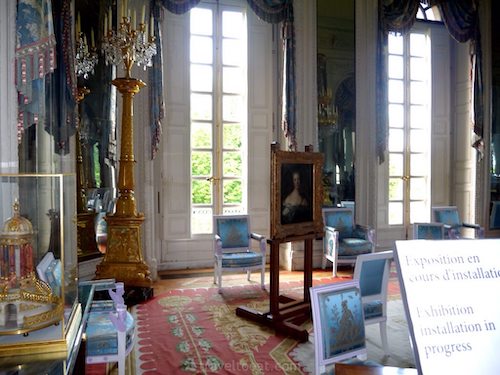
The furniture and draperies are covered with a damask silk called Four Parts of the World, by Pernon, woven in Lyon at the end of the eighteenth century for the Grand Cabinet of Queen Marie-Antoinette in the castle of Compiègne, part of which was acquired in 1805 in Paris (a modern weaving from older models). The set of chairs delivered in 1805 for this room are by Jacob-Desmalter, also covered with silk damask, Four Parts of the World, for Madame Mére. There are two temples in marble and gilded bronze, seen above left, which were presented in 1808 by King Charles IV of Spain to Napoleon.
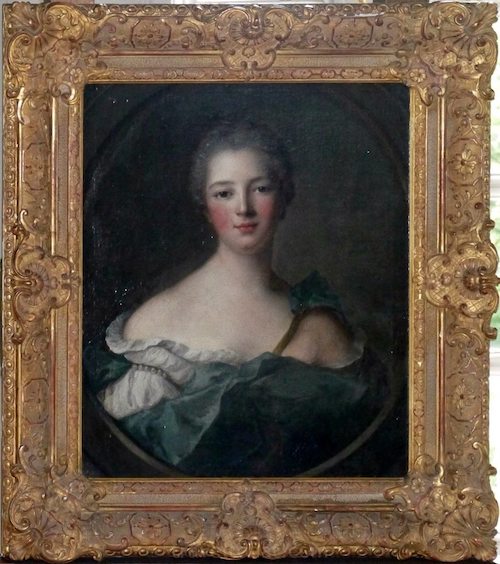
This is a portrait of the famous Madame de Pompadour by Jean-Marc Nattier and shows the powdered cheeks that were then in fashion and one of the typical features of Nattier’s portraits. Madame de Pompadou, otherwise known as Jeanne Antoinette Poisson, Marquise de Pompadour, was a member of the French court and was the official chief mistress of Louis XV from 1745 to her death in 1764. The King, and Madame Pompadour planned and built a number of costly palaces, pavilions and summer houses including the Petite Trianon. They also patronized all forms of the decorative arts. Painters, sculptors, cabinetmakers, and craftsmen of all kinds were commissioned to decorate buildings and create elegant works of art. The period of Madame de Pompadour’s influence is considered the very height of refined taste in France. Her influence over Louis increased markedly through the 1750s, to the point where he allowed her considerable leeway in the determination of policy over a whole range of issues, from military matters to foreign affairs. It was at the urging of Madame de Pompadour that the King appointed Voltaire royal historiographer in April 1745, with a salary of two thousand livres per year. Voltaire was given a room at Versailles, and it is likely that much of his time was spent in the archives of the palace doing research for his book about the reign of Louis XIV. The Queen, Marie Leszczinska, often said “If there must be a mistress, better her than any other.”
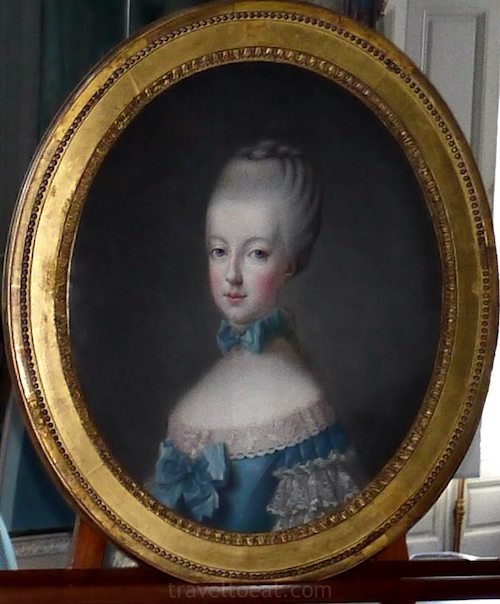
This is another famous portrait, this time of Marie Antoinette as a young Dauphine. As soon as he was proclaimed king, Louis XVI gave her the Petite Trianon as a gift with a key made of gold and diamonds. It was the first time a queen of France had a palace and it was called “little Vienna” or “little Shönbrunn” as a reference to her Austrian background.
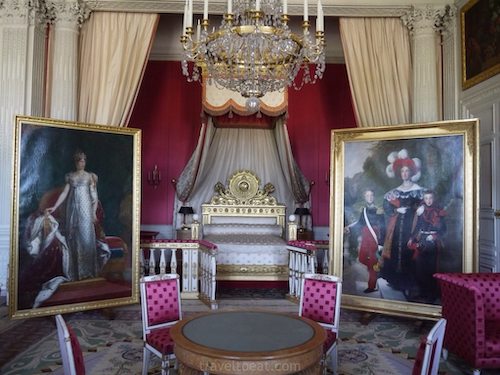
This is the Chamber of the Empress. This bedroom was created in 1691, taking the place of four small buffet rooms and intended for Louis XIV, then for the Grand Dauphin. In the 19th century, it was assigned to Madame Mère, then to the Empress Marie-Louise, and finally to Queen Marie-Amélie. The Queen kept a part of the impérial furniture to which she added other pieces. The ash round family table is by Alphonse Jacob-Desmalter, 1837. The balustrade with bronze gilt is by Marcion 1810. The chairs are by Marcion from 1810.
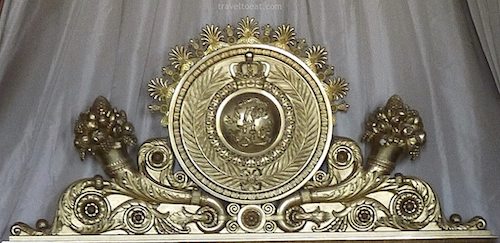
The gilt covered bed was first made for Napoleon I by Jacob Desmulter for the Tuilleries, it was modified in 1824 by Louis XVIII who died in it in 1824, finally it was transported to the Trianon and enlarged for Louis Phillipe and Marie-Amélie with the initials LP.
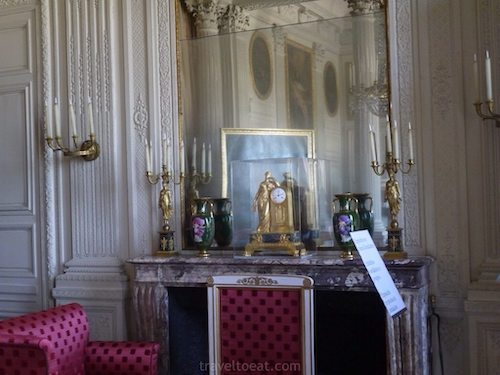
The two green Eutruscan vases seen here have figures of Flores and Cérès from 1810. The two candelabras are by Claude Gallet from 1810.
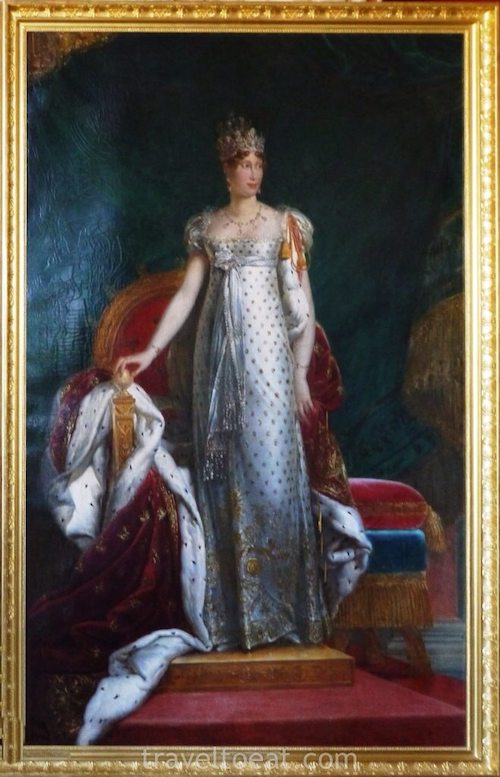
The large portrait to the left is Empress Marie Louise of France 1812, by Jean-Baptiste Paulin Guérin adapted from a painting by François Gérard. Marie Louise was the French empress from 1810 to 1814, she is shown leaving her imperial throne. The dress is dotted with imperial bees, a symbol of resurrection and immortality.
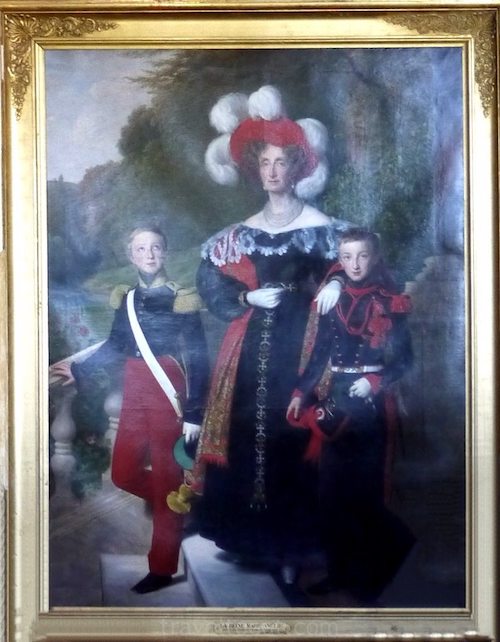
This is a portrait of Queen Marie-Amélie with her two sons, the duc d’Aumele and the duc d’Montpensier in the park of the palace of Neuilly. This painting is by Louis Hersent, a pupil of the painter David, and recipient of the Prix de Rome in 1797. His paintings are usually much more informal, not much to work with here though. Marie-Amélie, Queen of the French from 1830–1848, seems to like this hat, Hersent did another almost identical portrait with almost the same hat seen to the right. The chain going down from her belt is called a chatelaine.
Marie-Amélie de Bourbon-Sicile, Louis-Philippe’s wife, was the last queen to live in the Grand Trianon. She occupied Louis XIV’s former bedroom, sleeping in the same bed Napoleon had used in the Tuileries Palace.
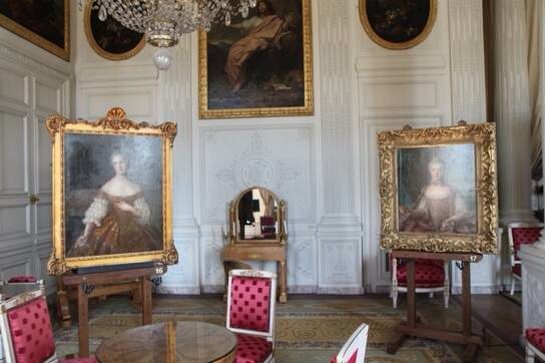
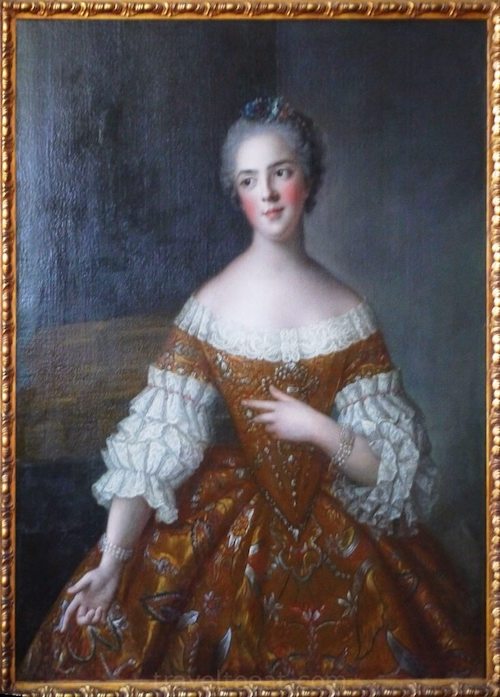
Louis XV had eight daughters named after the order of their birth. Henriette, known as Madame Seconde, was the king’s favorite. In February 1752, she became ill and died. This is a portrait of Henriette in an elaborate court dress of embroidered silk by Jean-Marc Nattier, note the rouged cheeks.
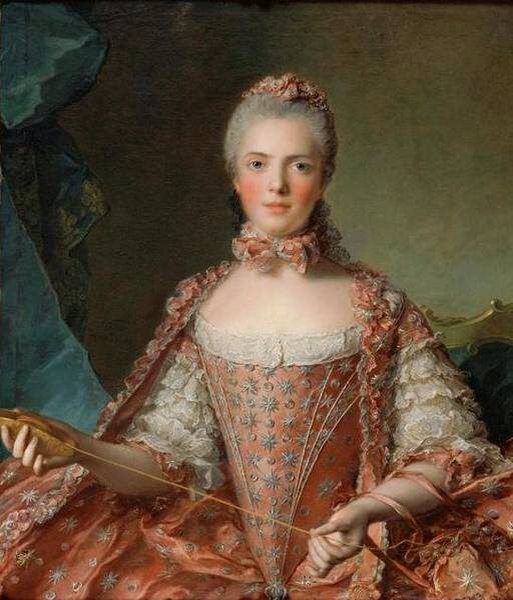
Madame Adélaïde, the fourth daughter of Louis XV, by Jean-Marc Nattier 1757.
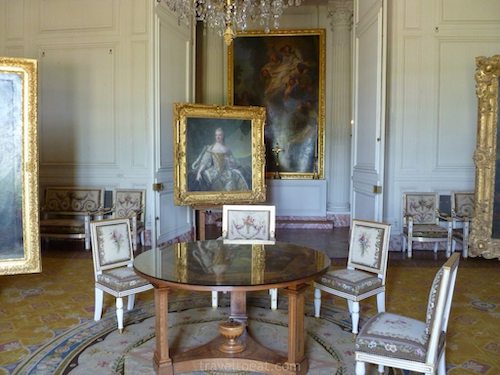
This is the Salon de Chapel, originally a chapel but converted in 1691 to a dining room with the altar behind the back door. During the First Empire it became the first room of the empress. The table from 1811 is inlaid with signs of zodiac and constellations.
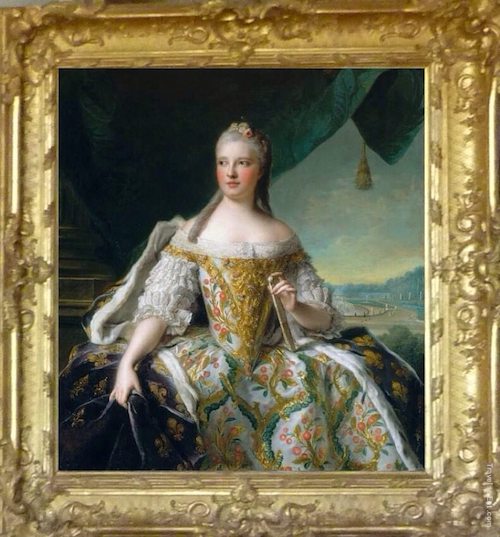
Marie-Josèphe de Saxe, Dauphine de France by Jean?Marc Nattier 1751. She was the wife of the Dauphin Louis XV and mother to the last three kings of the Bourbans, Louis XVI, Louis XVIII and Charles X. In the distance we can see the Latona fountain.
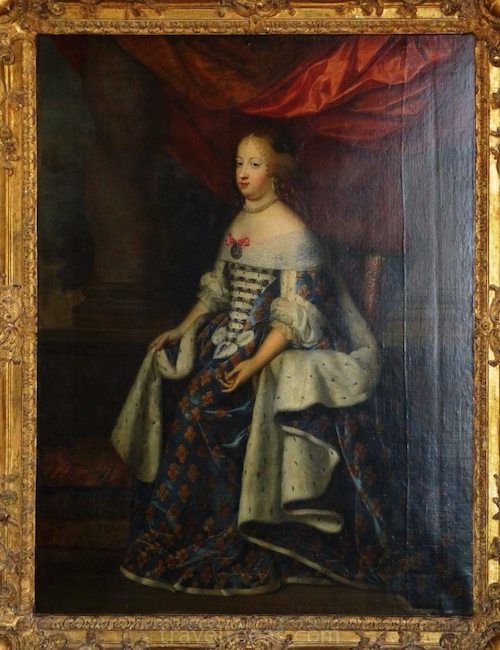
Portrait of Marie-Thérèse of Austria, queen consort of France as wife of Louis XIV, by Henri and Charles Beaubrun. All of the women in Beaubrun’s portraits look exactly the same, not a great painter. Of her six children, only one survived her, Louis, le Grand Dauphin, who died in 1711. The younger of Marie-Thérèse’s grandsons would eventually inherit her claim to the Spanish throne, becoming King Philip V of Spain in 1700. She died in 1683 in Versailles.
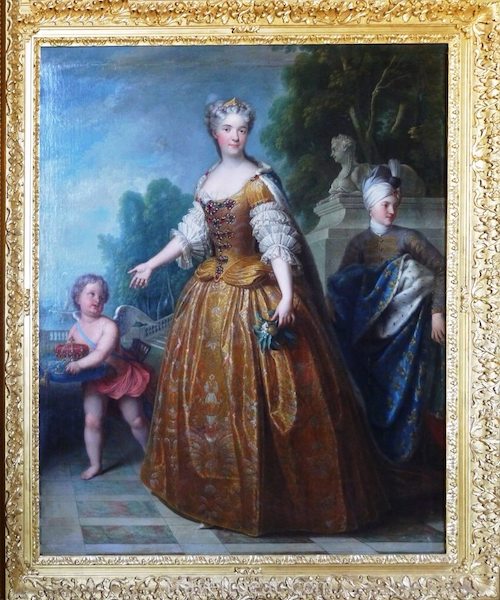
This is a portrait of Marie Leszczinska, the Polish princess Louis XV married in 1725 by François Stiémart. He installed her in the Trianon in 1741 to keep her away from court. Needless to say, it was not a happy marriage.
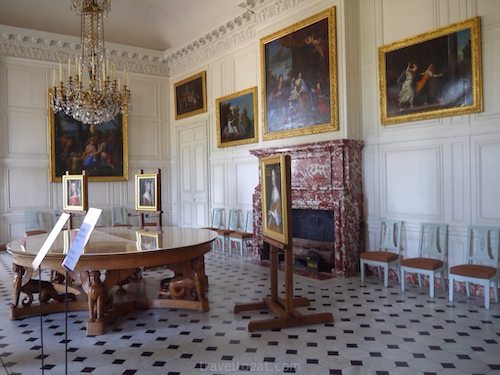
This is the Lords Room later the King’s antechamber and even later the Empress’ first antechamber. It still has its 1691 decor.
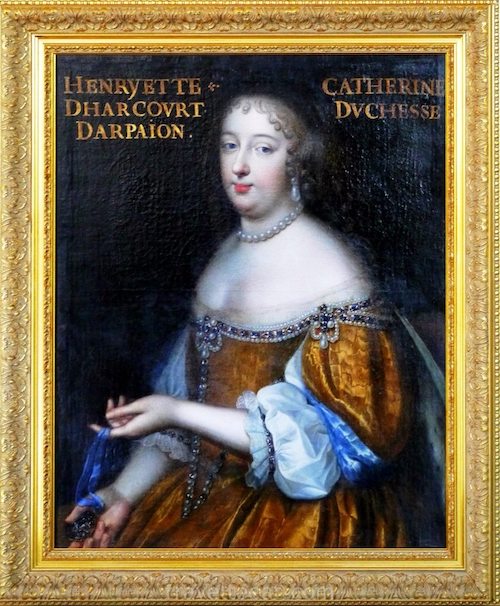
Catherine-Henriette d’Harcourt, duchesse d’Arpajon by Gebrüder Beaubrun. She was a lady in waiting to the Dauphine.
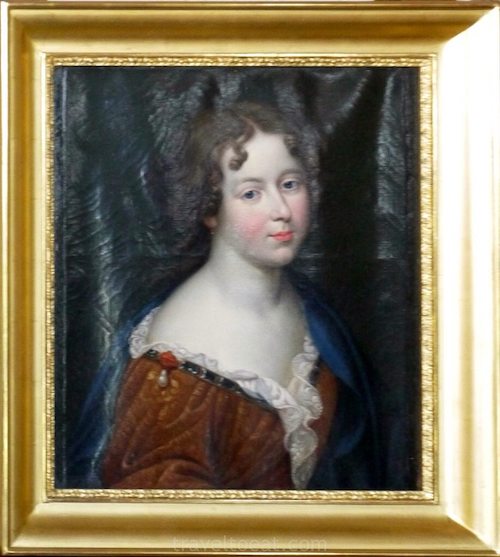
Charlotte de Lorraine, Mademoiselle d’Armagnac by Etienne-Achille Demahis 1839, a pretty young girl at the King’s parties.
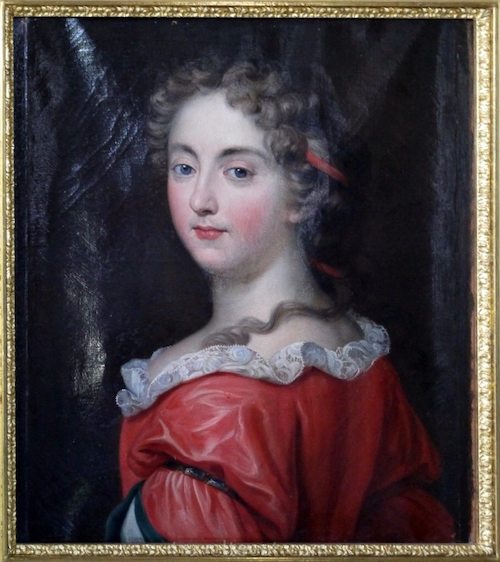
This is a painting of Élisabeth Thérèse de Lorraine, princesse d’Epinoy by Étienne-Achille Demahis. Another pretty girl at the parties.
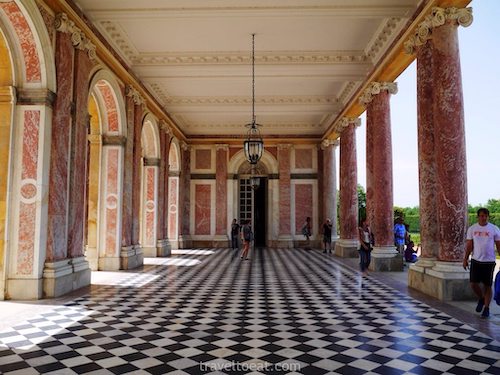
A colonnaded portico piercing the palace through the middle linked the courtyard and gardens, opening it up to the outdoors: that was the new building’s main idea. Wrongly called a peristyle, that name dates back to the Louis XIV period, the portico provides the Grand Trianon with the transparency that makes it so original, visitors can walk from the courtyard into the gardens without even noticing. In 1810 Napoleon had the peristyle glazed on both sides to ease communication between his apartment and that of the empress. The glazing was removed in 1910.
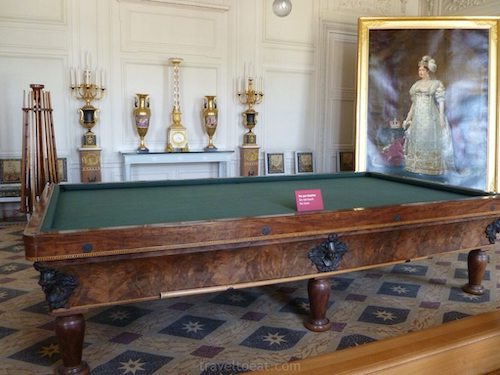
This is the Salon de Musique, former antechamber of Louis XIV where the king’s supper was served. Napoleon turned it into an officers room and Louis-Phillipe converted it into a billiards room. This is the largest billiard table I have ever seen. It is in mahogany by Cosson from 1830. The two candelabras in the form of a vase in bronze patiné et doré, are from the 18th century, from the imperial palace of Bordeaux. The two columns are marble with bronze gilt. The two vases in porcelain are from Lefebvre and Caron, Paris, with subjects from the Iliad and the Odyssey, from engravings of English sculptor John Flaxman, 1807. The porcelain clock is by Sèvres with a movement by Robin, with the 12 signs of the zodiac from 1825.
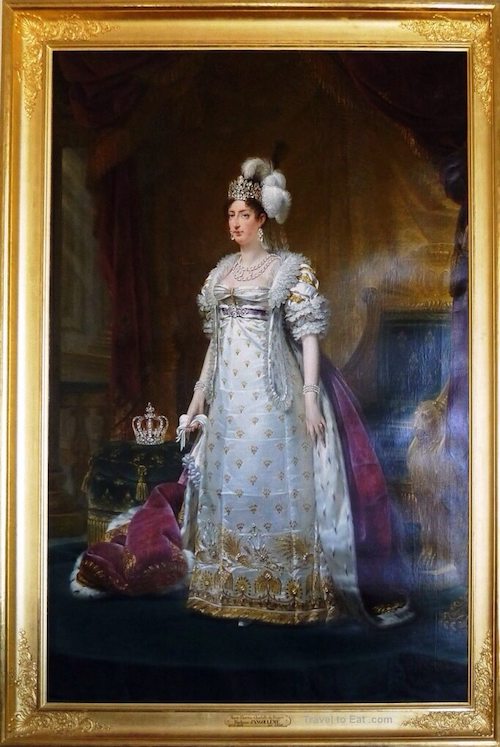
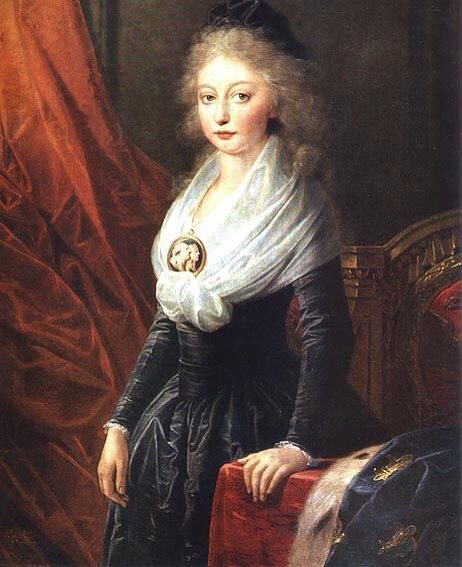
Duchess D’Angoulême or Marie Thérèse de France (Marie Thérèse Charlotte) was the eldest child of King Louis XVI of France and Queen Marie Antoinette, his wife. She was the only family member to survive the Reign of Terror, during the French Revolution. She arrived in Vienna on her 17th birthday. She married her cousin, Louis Antoine, Duke of Angoulême, the eldest son of the future Charles X. Once married, she assumed her husband’s title and was known as the Duchess of Angoulême. The painting is by Antoine-Jean Gros.
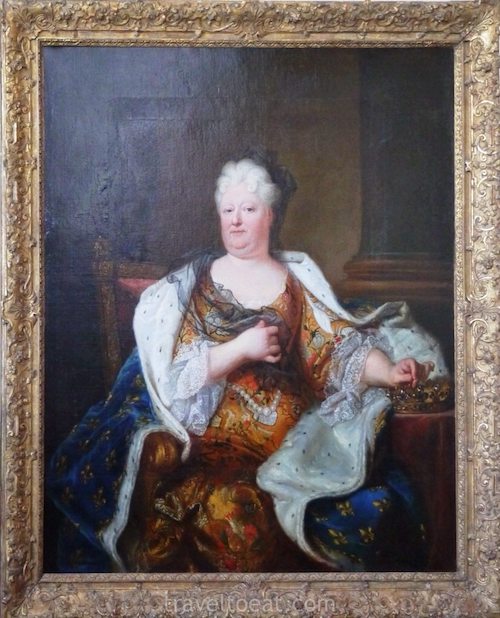
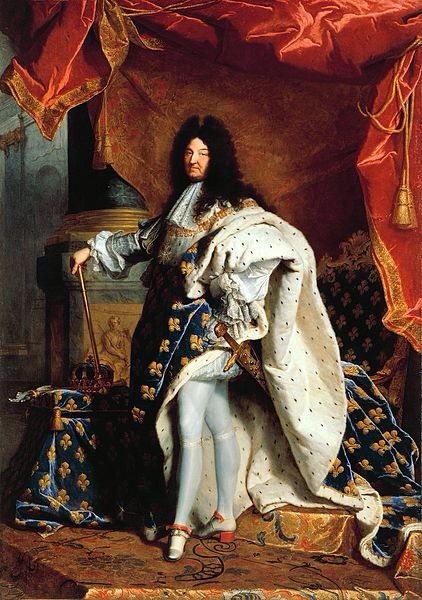
This is a portrait of Élizabeth-Charlotte Princess Palatine (called Lisolette) who was a German princess and the wife of Philippe I, Duke of Orléans, younger brother of Louis XIV of France. Her letters to her aunt Sophia and others created not only a vivid picture of life during the reign of Louis XIV, but also of the Regency era of her son, Philippe. The portrait is by Hyacinthe Rigaud, renowned for his portrait paintings of Louis XIV, the royalty and nobility of Europe, and members of their courts and considered one of the most notable French portraitists of the classical period. He is most famous for the portrait of Louis XIV seen to the right.
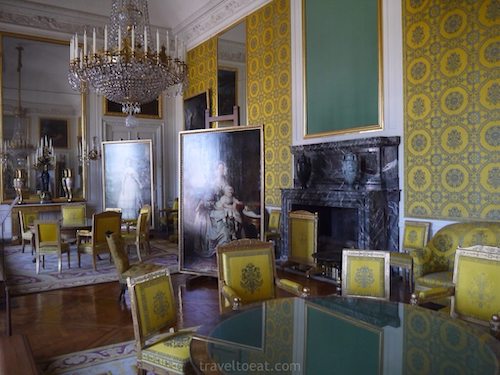
This is Salon de Famille de Louis-Philippe. Louis Phillipe had two smaller rooms opened to create this large one, where he and his family gathered in the evenings. The chairs are by Pierre-Gaston Brion, delivered in 1811 at the Imperial Furniture Repository, gilded and covered with silk cannetillé in 1839 for this room. Two sofas upholstered in tapestry by Lafleche were delivered in 1838 to complete the set. The two family tables of mahogany by are by Alphonse.
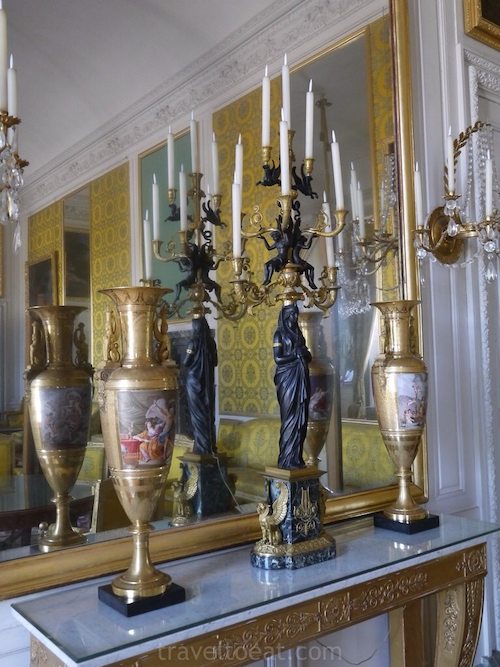
The porcelain vases are by Lefebvre and Caron, Paris from 1807. They are decorated with scenes of the Idylls of Salomon Gessner. The candelabra is patinated and gilt bronze with a green marble base, delivered in 1838 by Chain for the Palace Saint-Cloud. The gilded wood console is by Pierre-Benoit Marcioin from the Petite Trianon.
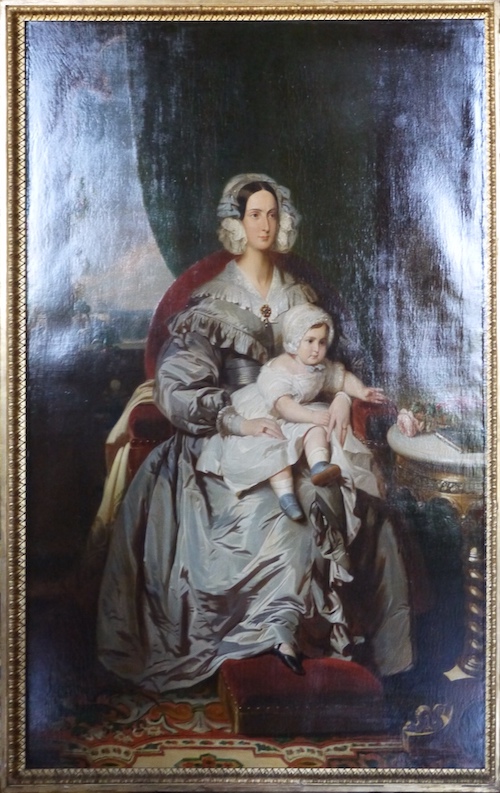
Marie-Caroline-Christine d’Orléans, Duchesse de Wurtemberg by Franz Xaver Winterhalter. Her claim to fame is that she married Prince Alexander of Württemberg in the Grand Trianon Chapel in 1837.
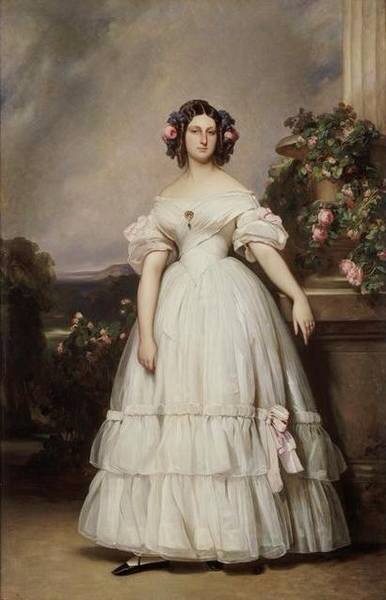
Marie-Clémentine d’Orléans, Princesse de Saxe-Cobourg & Gotha 1839 by Franz Xaver Winterhalter. She was the last survivor of the princesses who lived in the Grand Trianon.
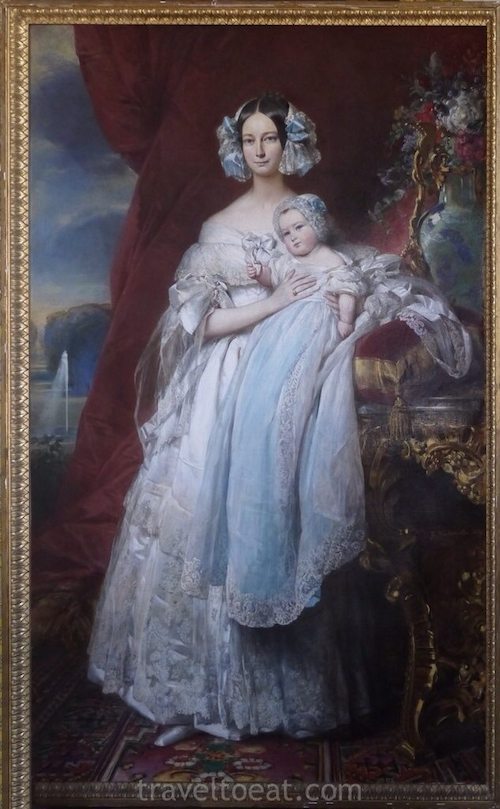
Helene Louise Elizabeth de Mecklembourg Schwerin, Duchess D’Orleans with Prince Louis Philippe Albert D’Orleans, Comte de Paris by Franz Xaver Winterhalter 1839. She did not like staying in the Trianon, she considered it a kind of exile. She was a French Crown Princess after her marriage in 1837 to the eldest son of Louis Philippe I, Ferdinand Philippe of Orléans.
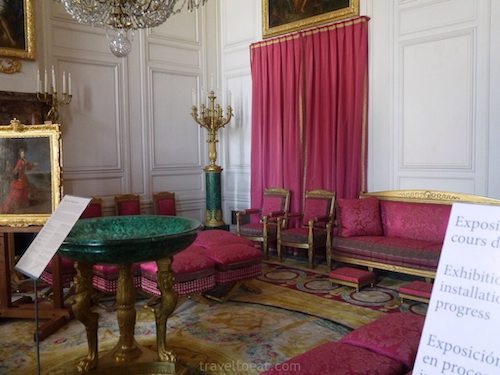
The Malachite or Emperor’s Room where Napoleon I displayed Tsar Alexander’s gifts of malachite. In the 17th century this room was called the Sunset room and served as a bedroom for the duchess de Bourgogne. After becoming the emperors living room, it was specially decorated to display the artifacts made from blocks of Siberian malachite sent in 1808 by Tsar Alexander I to Napoleon after the treaty of Tilsit (1807). These objects, the richest in the whole apartment, were first placed in the large study of the emperor in the Tuilleries palace. They were then moved to the Grand Trianon in 1811 because the study was too small to display them suitably.
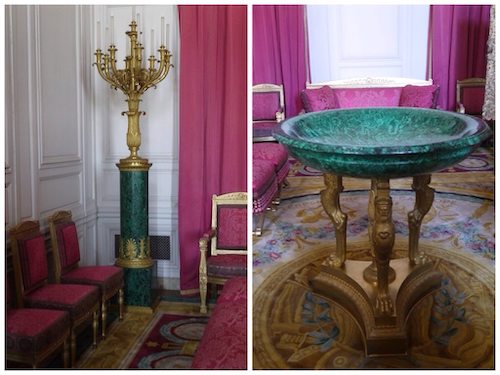
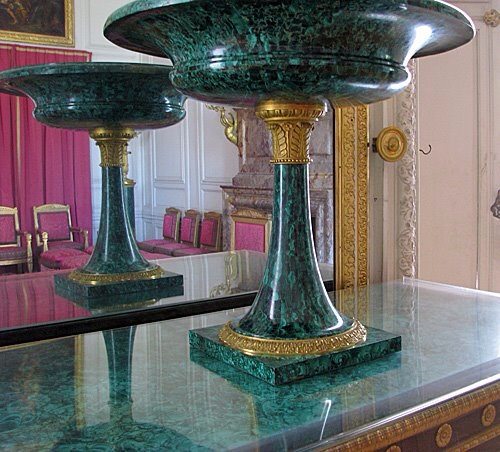
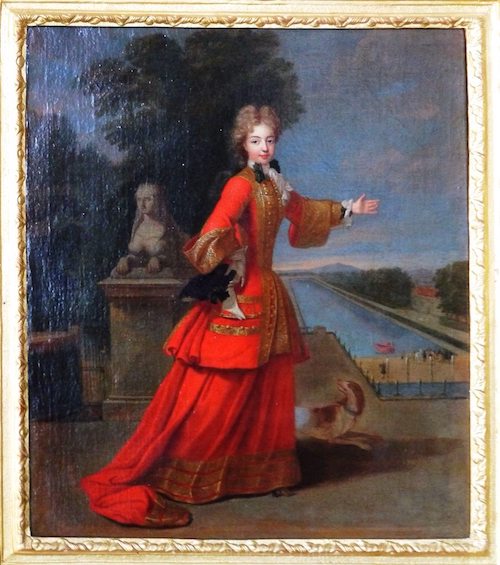
Marie Adelaide of Savoy by Pierre Gobert 1704. The little Savoyard princess that arrived in Versailles as the intended bride for the future heir of France, the young Duc de Bourgogne son of the Dauphin, was “like a breath of fresh air” in the stagnating court of the old king Louis XIV and his wife Madame de Maintenon. She became the Duchess of Burgundy after her marriage and became the Dauphine of France upon the death of her father-in-law, Le Grand Dauphin, in 1711. She and the Dauphin had three sons and the Bourbon dynasty was assured. At age 26 she, her husband and two of the children died of measles. The surviving son became Louis XV of France.
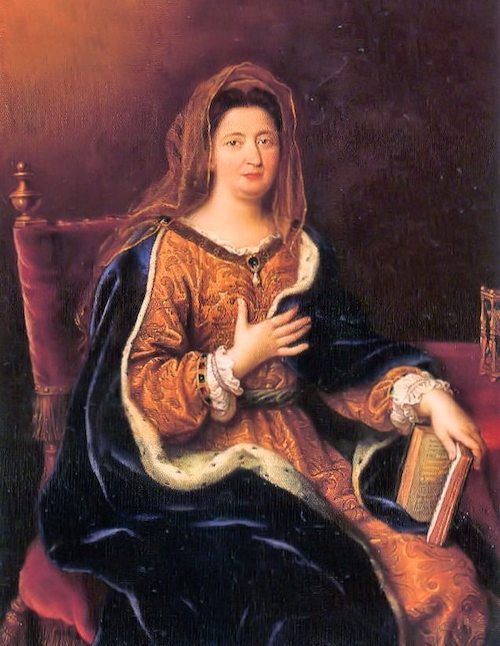
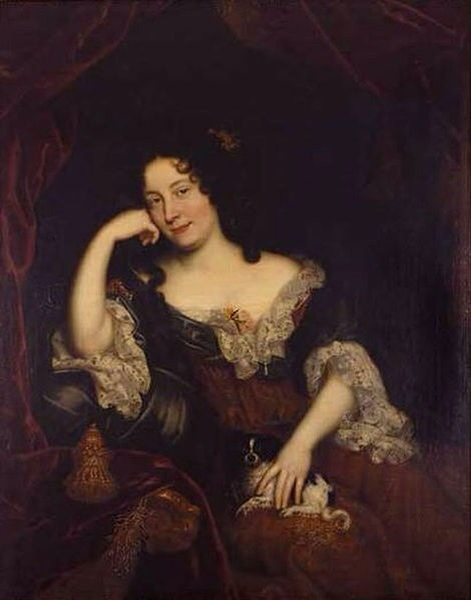
This is the famous Madame de Maintenon or Françoise d’Aubigné, Marquise de Maintenon. The painting is by Pierre Mignard. She was the second wife of King Louis XIV of France although her marriage to the king was never officially announced or admitted. In this painting she is depicted as Saint Frances of Rome, with her hand over her heart. It is thought that she influenced Louis XIV to revoke the Edict of Nantes, pushing the Protestant French out of the country. Madame de Maintenon proved a good influence on the king. His wife, Queen Marie-Thérèse, who had spent years being rudely treated by Madame de Montespan, openly declared she had never been so well treated as at this time. On the death of Marie-Thérèse in 1683, she was married to the king in a private ceremony by François de Harlay de Champvallon, Archbishop of Paris in the winter of 1685.
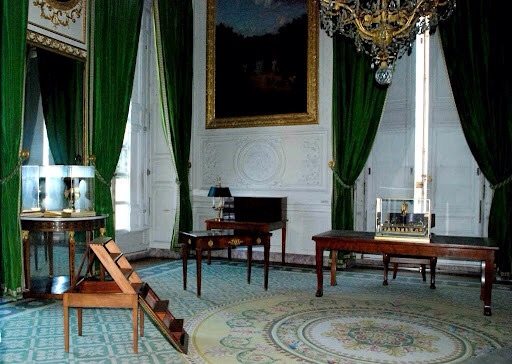
This is the Cabinet Topographique de l’Empéreur. In 1810 Napoleon had it fitted out as a library.
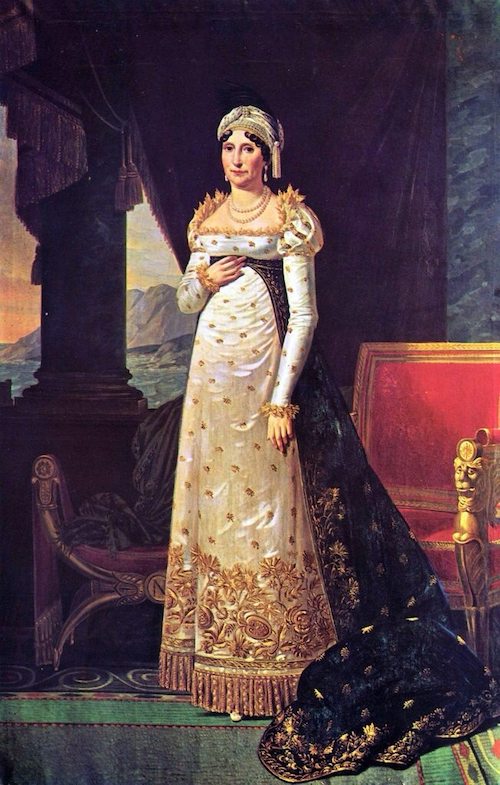
Maria Letizia Buonaparte or Madame Mère was the mother of Napoleon I of France. In 1805 Napoleon offered his mother the left wing of the Grand Trianon while he and Josephine took the right. She moved in and then told her son she preferred the right side, he refused and then moved out. The painting is by Robert Lefèvre.
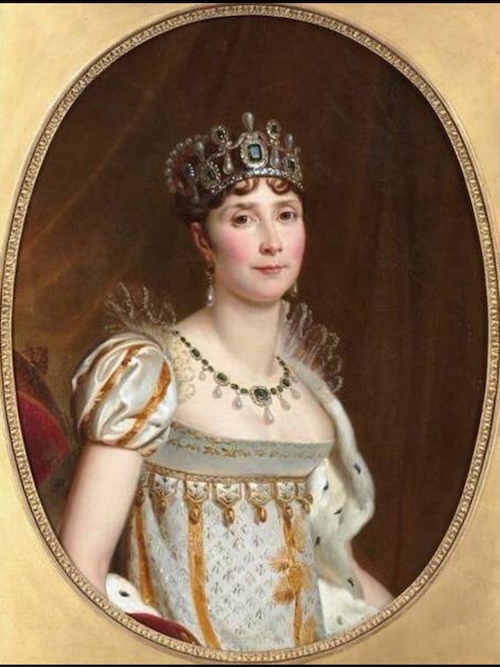
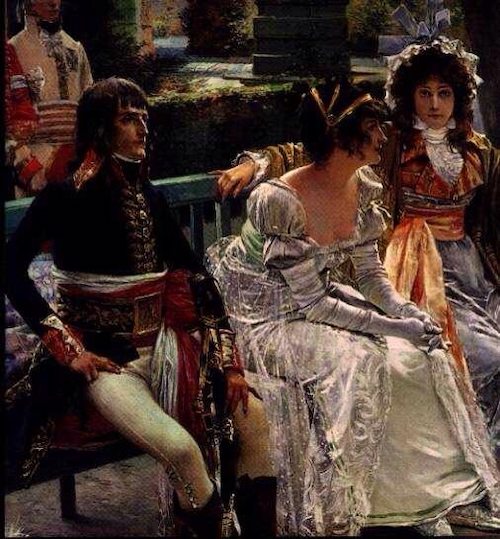
This is a portrait of Joséphine de Beauharnais Tascher de la Pagerie who was the first wife of Napoléon Bonaparte, and thus the first French Empress. Her first husband Alexandre de Beauharnais was guillotined during the Reign of Terror. She married Napoleon in 1796 and became empress in 1804. Unfortunately she did not produce any heirs, as a result, he divorced her in 1810 to marry Marie Louise of Austria. The portrait is by François Gérard.
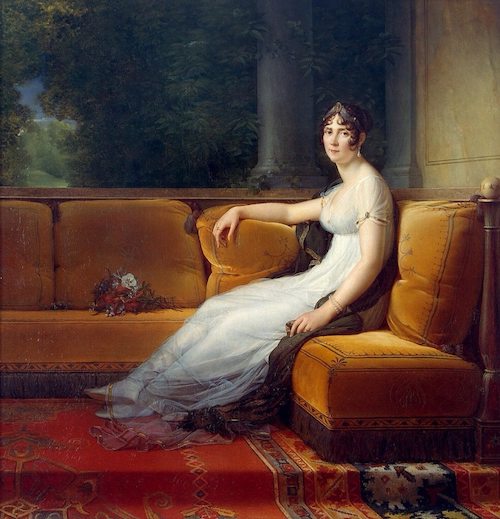
I personally like this portrait from the Hermitage from 1801 also by François Gérard. Joséphine was the recipient of numerous love letters written by Napoleon, many of which still exist. Her chateau of Malmaison was noted for its magnificent rose garden, which she supervised closely, owing to her passionate interest in roses, collected from all over the world. Even two hundred years later she and Napoleon look like a cool couple.
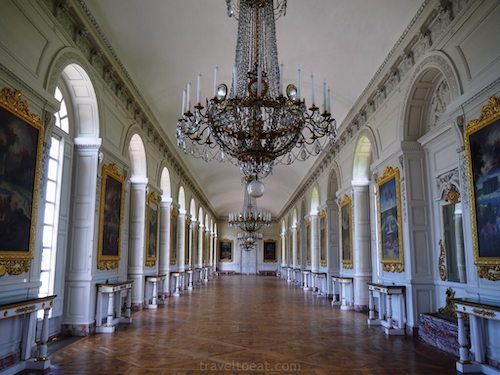
This reminds me of the Hall of Mirrors at the main palace, it is called the Cotelle Gallery after Jean Cotelle who painted twenty-one of twenty-four paintings hanging in this room. Etienne Allegrain also painted two, and Jean-Baptiste Martin painted the last. The paintings depict the gardens and grounds of Versailles. This set of paintings, commissioned in 1688, remained in place until the First Empire. The collection was transferred to Versailles under Louis-Philippe, to leave room for easel paintings. The works returned to their original location in 1913. The sixteen consoles, are by Pierre-Benoit Marcion in 1810.
I will explore the gardens of the Grand Trianon in a separate post. This was a very lovely experience and I suggest you go if you are at Versailles. Take the train, don’t walk, it is a long way from the entrance.
References:
Buy the book: http://en.chateauversailles.fr/news-/events/expositions/les-dames-de-trianon-en/lexposition/pour-approfondir-votre-visite-1-en
Chateau Versailles Passion: http://chateauversaillespassion.skyrock.com/
The Art Tribune: http://www.thearttribune.com/spip.php
Insuleca: http://www.insecula.com/musee/M0038.html
Web Gallery of Art: http://www.wga.hu/index.html
The Red List: http://theredlist.fr/
A German site, Schloss Versailles: http://chateau-versailles.npage.de/2012-07-dames-trianon.html

